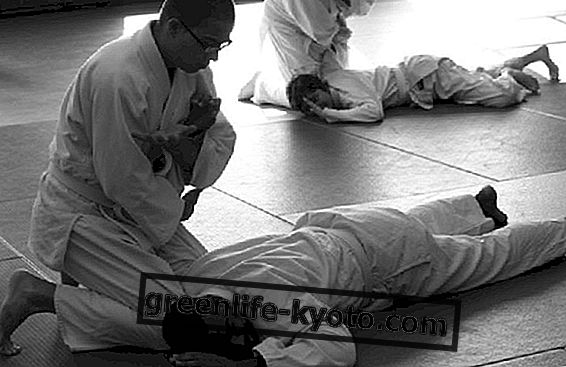Samatha meditation is a Buddhist practice that allows us to achieve a dimension of inner peace . Let's find out better.
>

History and origin of Samatha meditation
Samatha meditation is a type of meditation of Hindu root Buddhism. The purpose of this method is to achieve a dimension of inner pacification, preparatory to vipassana meditation . THE
a samatha meditation includes eight levels, four of which are end materiality (four Jhana ) and four immaterial. Jhanas are a progressive series of meditative absorptions traversed by practitioners of samatha meditation as they deepen the level of concentration. This technique has always been widely used by ascetics in India, before and after Gautama Buddha . The samatha is not born therefore with the Buddhist philosophy, but is grafted on later.
The samatha system would be inspired by the enstatic traditions (enstasi da en-stasis = to be inside, term used by Mircea Eliade) and transcendentals of Yoga and Jainism which insist on abstraction and the search for sensory isolation, while the vipassana system is done tracing back to the immanentist and ecstatic meditative paths deriving from the Vedas (Rishis) and the Upanishads. In these systems, liberation is sought in the world, without having to abstract it by practicing asceticism and resorting to the exasperation of introspective techniques.
The benefits of Samatha meditation
The samatha meditation is based on the awareness of the breath, through prolonged observation (for at least 15-30 minutes) of the phases of inhalation and exhalation in one of the points in which the sensation of the breath entering and circulating in the body is clearer: all entrance of the nose, in the stomach or at the level of the solar plexus (point corresponding to the third of the seven chakras, manipura, located in the upper half of the belly).
Thanks to samatha meditation, it is possible to focus attention by diverting it from negative emotions, such as anger, anxiety, envy and resentment.
This technique generates the necessary energies that the next vipassana will turn into action. On the physical level, samatha meditation allows deep relaxation that does not dull the attention, but strengthens it, helping to reduce the frequency of breathing, heart rate and arterial pressure.
Meditative practice also allows for a greater awareness of body states, which determines an increasing ability to understand and regulate emotional states. The activity of the left prefrontal cortex, related to positive emotions such as enthusiasm, energy and happiness, greatly increases.
Description of the technique
The practice of samatha meditation begins with the exercise called sila (virtue), a systematic exercise of the rectitude of thought, speech and action. This serves to ward off aggressive thoughts or sexual fantasies that distract from meditation. This is necessary for purification.
In the Visuddhimagga, an ancient Buddhist commentary, purification begins with the observance of certain rules of discipline for lay people, novices and ordained monks. There are five precepts for the laity: do not kill, do not steal, do not have illicit sexual relations, do not lie, do not use toxic substances. For novices the list is extended to ten. Finally, for the monks there are 227 prohibitions and obligations, which regulate daily life, the so-called Patimokka, in all details.
The essence of concentration is not being distracted, so the meditator's first task is to focus the mind on one thing. Any object can be suitable for concentrative meditation, even if the character of the object to which attention is paid has precise consequences on the result of meditation.
Let's see how to do samatha meditation in the simplest way : sitting on a meditation cushion, with your back and neck straight. Crossed legs and relaxed shoulders. You can put your palms on your thighs and have your eyes open, without setting any specific points. The important thing is to be relaxed.
The tongue touches the palate behind the incisors and one begins to breathe, both with the nose and the mouth. We focus on the breath, on its natural movement, without trying to follow it. When a thought occurs, it is enough to recognize it as such and return to the breath. This technique induces a 'calm abiding'.
What is the correct way to breathe during a meditation session?

Suitable for
Paraphrasing the words of Buddha, samatha meditation represents the sharp sword without which it is risky to go into battle. This is therefore the basic form of meditation which allows one to experience higher stages of meditation. For example, practicing vipassana without mastering samathe is futile and, at times, even dangerous.
The samatha is excellent for those who want to abstract themselves from the urban context and take refuge in themselves, experiencing concentration and listening to themselves. The awareness of the breath of samatha meditation is indicated for those seeking a form of natural relaxation, which allows harmony between body, mind and spirit . Universal knowledge will then be easier to pursue.
Where Samatha meditation is practiced
The concentration and abstraction that samatha requires are typical of the atmosphere of Buddhist monasteries. To practice samatha meditation, focused on the breath, one can approach the Buddhist teaching, at schools of Buddhism, or more simply, one can find samatha meditation courses in general yoga or meditation schools.
Often small samatha meditation courses are found in vipassana meditation courses or during spiritual retreats, as a "preparatory subject" for meditation. Furthermore, there are also several books on the subject, such as From the Samatha Meditation to the Vipassana Meditation .
Curiosity
The word samatha comes from the pali, the religious and literary language of Burma, Thailand and Sri Lanka, and means "concentration", "quiet". The semantic roots of the term refer to the concepts of pacification, in the first part (sa -, shamao shi in Tibetan), and of pause or slowing in the second ( -tha ).













